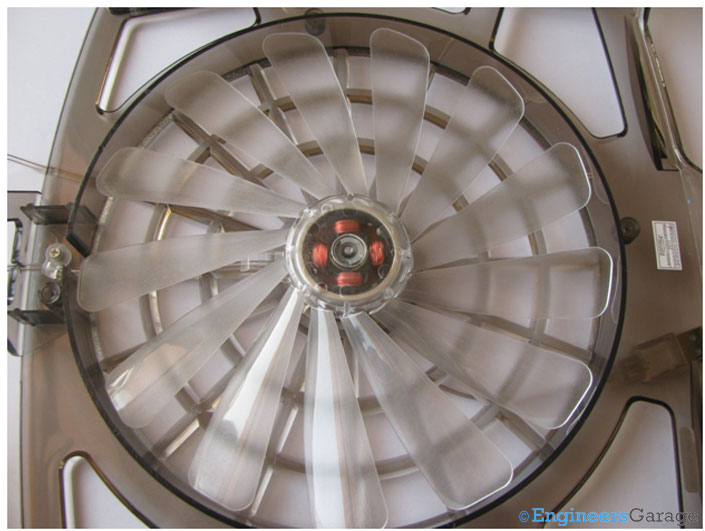With time and usage, many laptops face a common problem of overheating. It not only reduces efficiency of the laptop but can also cause damage to laptop peripherals such as hard disks or microprocessor. In order to assist laptop cooling fans, USB powered cooling pads have caught the fancy of computer enthusiasts and are widely in demand all over. Light weighted and economic, cooling pads boast of keeping the laptops temperatures within tolerable limits even during prolonged spells of extensive usage. Let’s have a look at a typical laptop cooling pad.

Fig. 1: Laptop Cooling Pad

Fig. 2: USB-Powered Cooling Fan
Shape
Cooling pads are generally made of lightweight plastic or aluminum mesh or a combination of both. This makes them a portable accessory. The structure is strong enough to bear the load of the laptop. Depending on the manufacturer and the size of the laptop, number of fans and dimensions of the cooling pad may vary.

Fig. 3: Tilted structure of cooling pad
Rear Structure & Fan
Cooling pads usually come in many shapes but most designs sport slight tilting to supplement the ergonomic usage of the laptop. The laptops are placed with the tilted side facing the user so that they can have easy access to keyboard. The laptop is held on the tilt structure through the rubber sponge pads that are placed at the edges of the cooling pad.

Fig. 4: Thin Plastic Blades
The rear of the pad houses a fan made of thin plastic blades. Usage of thin plastic blades avoids any chances of user getting hurt or any laptop peripheral getting damaged. More number of blades enhances the centrifugal operation of the fan.

Fig. 5: The Fan in Operation
A laptop generates tremendous amounts of heat when CPU is subjected to large computational loads, such as, during HD video gaming. The main task of the cooling pad is to assist the internal fans of the laptop in ejecting the air, thus they act as exhaust. This is the why laptop cooling pads are generally considered an accessory for gaming laptops.

Fig. 6: Fan Sans Plastic Stand
Brushless D.C. Motor
Without the plastic stand, the fan loses its identity of a laptop cooling pad. As shown above, it looks like a simple USB powered fan that any user can plug in to get some respite from heat.

Fig. 7: Brushless DC Motor
After the blades are removed the brushless DC motor is seen. The motor is the basis of the cooling pad and derives its power from the laptop through the USB port. The motor used in pad has a permanent magnet and can provide speeds from 600RPM to 2300RPM and more.

Fig. 8: Connection Settings of DC Motor with PCB
The coils of the motor are connected to a PCB upon which the USB wire connections and the LEDs are mounted.

Fig. 9: LEDs lit by Laptop USB
The image above shows the LEDs giving response to the USB power even when the fan and its peripherals are taken off.
The major factor that decides the quality of a cooling pad is the material used and the ratings of the motor used in it. The speed and quality of the motors used often dictate the price of the laptop cooling pads with the expensive pads using better motors with higher RPM capabilities. The pads having fans with a higher RPM require a better support to hold and hence need to have higher quality.
Filed Under: Insight


Questions related to this article?
👉Ask and discuss on Electro-Tech-Online.com and EDAboard.com forums.
Tell Us What You Think!!
You must be logged in to post a comment.